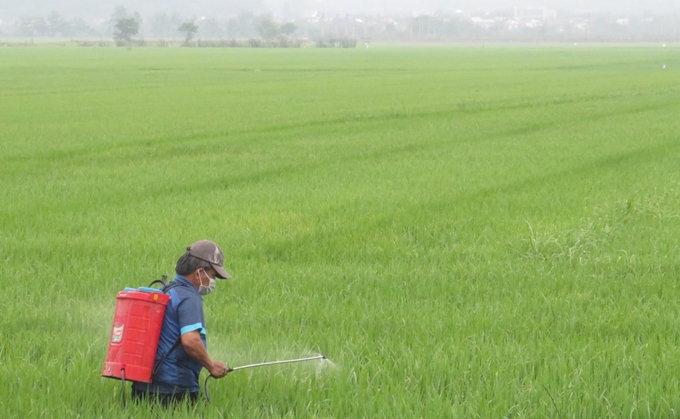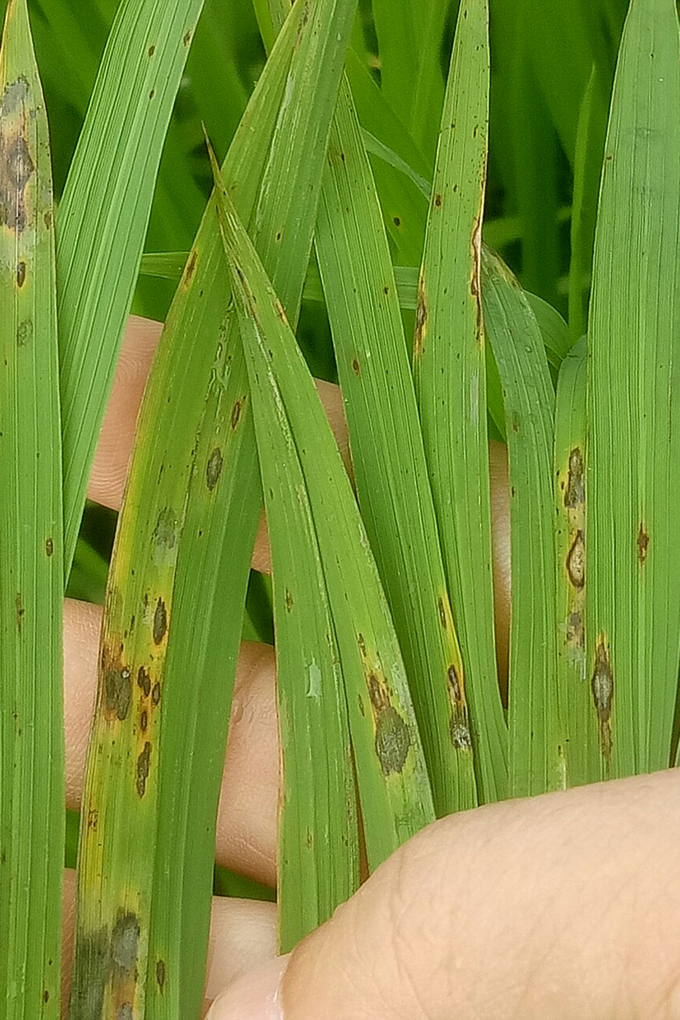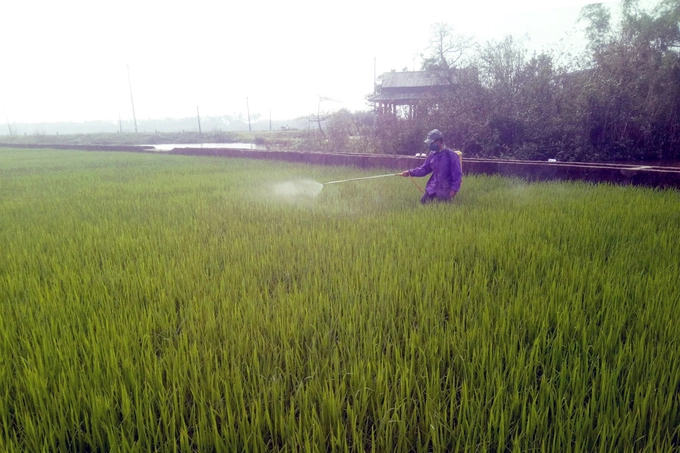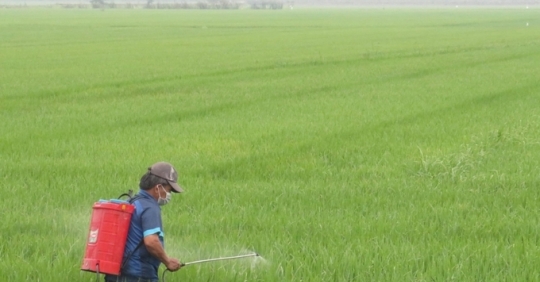In the winter-spring harvest of 2022 – 2023, the entire province of Thua Thien – Hue planted about 28,000 ha. At present, the first tar rice is in the ripening stage, the bulk area is in the tillering stage.
Blast disease has recently emerged, damaging hundreds of acres of winter-spring rice. It is noteworthy that, as noted in this place, the smut disease has appeared only in some varieties of rice, such as J02, BT7, sticky rice… In addition to glutinous rice, a local traditional variety kept by farmers for planting, there are also other varieties such as J02, BT7 are the varieties introduced by the local agribusiness and supplied by the company.

The entire province of Thua Thien – Hue is affected by rice blast disease on 1,300 ha, with the main focus being on the rice variety J02. Picture: Kong Dien.
For example, in Phu Vang District, one of the key rice-growing areas of Thua Thien Province in Hue Province, leaf smut disease recently caused major damage, mainly to the current cultivar J02. The flowering period causes great concern to people.
In this crop year, Phu Ho Agricultural Cooperative (Phu Vang District) planted about 370 ha of JO2 rice varieties, of which more than 150 ha were in the form of community production, the rest was planted spontaneously by humans. According to the authorities, Phu Ho Agricultural Cooperative is one of the places with a high rate of blast disease in Phu Vang District and Thua Thien-Hue Province.
Nowadays, farmers are restless because of the raging blast disease. Holes appeared in many fields of the cooperative, where fires died out due to explosion diseases. Although authorities have recommended the use of pesticides to prevent the disease, the situation has not improved.
Mr. Nguyen Van Tan, chief of the Department of Agriculture and Rural Development of Phu Vang District, said the area infected with the blast disease in the district is about 100 ha so far, the largest of which is in Phu Ho (25 ha). and Phu Luong (30 ha) communities. , Phu My (20 ha)…
In order to limit the development and spread of rice blast disease, functional units have guided farmers to appropriately regulate water levels in fields to keep rice warm, balance fertilization and avoid nitrogen over-fertilization by using microbial fertilizers and potassium fertilizers add through the leaves…to help rice grow and develop well to increase disease resistance.
According to research, the rice variety J02 is a pure Japonica rice variety originating from Japan and imported and selected by the Institute of Agricultural Genetics. This rice variety has been tested and mass-produced in a number of units in Thua Thien – Hue Province from the 2017-2018 crop year.

Leaf smut disease caused damage to some important rice varieties, which worried farmers. Picture: University.
This is a strain incorporated into the breeding structure of Thua Thien – Hue Province and is exclusively supplied to farmers in the province by Thua Thien – Hue Plant Seeds and Animals Joint Stock Company. Especially for this year’s winter-spring harvest, this company is providing farmers in the province of Thua Thien – Hue with almost 100 tons of seed, which corresponds to a cultivation area of about 4,000 hectares.
When asked why the rice variety J02 is susceptible to the blast disease but still included in the production structure of Thua Thien – Hue Province, Mr. Le Van Anh, Director of the Cultivation and Crop Protection Subdivision of Thua Thien Province – Hue said: All types of rice that are put into production usually have two sides. For example, the J02 variety has the advantages of stable yield, good quality and high selling price, but has disadvantages compared to other storm-prone rice varieties.
Mr. Le Van Anh also shared that among the rice areas recently infected with blast, only a few were severely infected, but compared to the total cultivated area of the whole province, this is also normal (? !).
“We have also instructed and advised people but they refuse to spray the room or spray the wrong drug. If the spray is wrong, there will be some burning areas in the near future. We will continue to check the blast disease infected area of rice sprayed for monitoring and treatment if there is a risk of disease recurrence,” Mr Le Van Anh said.
Mr. Dang Van Chung, representative of Thua Thien – Hue Seed Joint Stock Company, said that JO2 is a breed that companies in Thua Thien – Hue Province have been producing for about 5 years.
This year alone, the unit supplied more than 100 tons of JO2 seeds, equivalent to about 4,000 hectares of cultivable land for farmers in Thua Thien – Hue province. The structure of this variety accounts for almost 20% of the total rice area of the province.

Farmers in Thua Thien, Hue province, spray pesticides to prevent pests and diseases. Picture: University.
According to Mr. Chung, the J02 rice variety has very good tolerance to cold and waterlogging. However, he also acknowledged that the J02 strain is very susceptible to blast disease.
“We recommend infecting the variety with leaf smut and cotton neck without spraying. We also advised what to do and what not to do,” Chung said.
Speaking of the strong outbreak of rice blast disease on rice in recent years, mainly the seed sets supplied by the company, Mr. Chung said the cause of rice blast disease J02 was adverse weather. People’s production level is still limited.
According to the Ministry of Cultivation and Plant Protection of Thua Thien – Hue Province, up to now, over 1,300 hectares of rice in the province have been infected with the blast disease with the disease rate of 5 – 10%, the local disease rate of 20 – 50%, concentrated mainly to the districts of Phu Vang, Phu Loc, Quang Dien, Huong Thuy City, Huong Tra and Hue City…).
The varieties infected with blast disease in this winter-spring crop mainly focus on JO2, BT7, Sticky Rice…supplied by Thua Thien – Hue Plant and Animal Seed Joint Stock Company.

